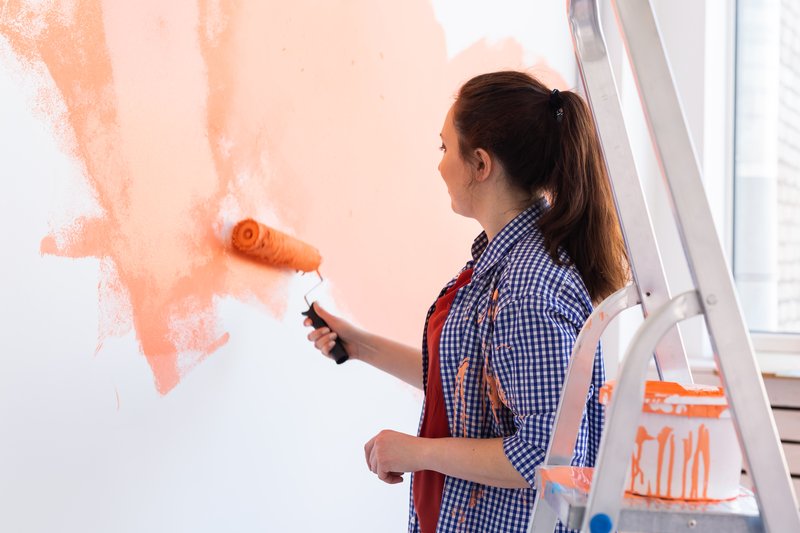
Are you undertaking an indoor painting project in your home? Creating a feature wall? Renewing the kitchen cabinets? Trying a new colour in the dining room? Preparing the nursery? Be aware that there’s more to think about than what colour and sheen you desire. Paints can emit harmful chemicals that cause a range of short and/or long term health issues. These chemicals can out-gas and contaminate your indoor air for up to 5 years after the paint has been applied! What are these chemicals and what problems can they cause?
VOC’s (volatile organic compounds) are emitted as gases from certain solids or liquids such as paint and varnish. Exposure to VOCs can lead to loss of coordination, dizziness, headaches, skin irritation, nausea, fatigue, eye/nose/throat irritation, kidney/liver/nervous system damage, cancer and/or visual/respiratory impairment.
Fungicides and biocides are chemicals used to prevent mildew growth and extend the shelf life of a paint product. They may cause asthma and other respiratory illnesses, disrupt the endocrine (hormonal) system and/or have effects on the skin, eyes, nervous system, and other organs. They are a particular risk to pregnant women, unborn life, small children, or people with serious chronic illnesses.
Nonylphenol Ethoxylates are common paint additives that can disrupt hormones, are linked to reproductive harm and are highly toxic to aquatic life.
Glycol Ethers are solvents often added to paint that act as a respiratory irritant and can cause headaches, nausea, asthma, allergies, reproductive and developmental problems.
Phthalates are plasticizers that increase a paint’s flexibility and may cause hormone disruption and developmental problems.
Crystalline Silica is often added to paint for colour and texture. Sanding or scraping this paint creates carcinogenic dust-containing crystalline silica.
Metals, such as cadmium and chromium, are contained in some pigments. They can lead to kidney disease, fragile bones and lung damage.
What you can do
There are some steps you can take to protect yourself and your family from the toxic chemicals often contained in paints:
- Select the least toxic, lowest VOC paints available. Ask your local paint supplier for help.
- Look for mineral or plant-based pigments. They’re less toxic to produce and have far fewer health risks than conventional pigments.
- Use alcohol or soy-based paint strippers to minimize risk from the fumes.
- Consider milk paints. They’re made from milk protein and contain no VOCs or harsh ingredients.
- Read product labels, in order, to select a product that will generate less harmful fumes. Even latex, low-VOC paints can contain other toxic ingredients.
- Read safety information and directions on the product label carefully. Note any warnings, first-aid information, or if protective measures like gloves or goggles are required.
- Always work in a well-ventilated area, using a fan in the window to help direct air flow to the outside.
- Use a respirator when sanding. Dust masks do not protect against solvent vapors or crystalline silica.
- Consider using a respirator when painting to lower your risk of inhaling VOCs.
- Take frequent fresh air breaks.
- Keep windows open for two to three days to allow paint fumes to exit.
- Close any leftover paint containers tightly to prevent vapors from leaking.
- Do not use exterior paint indoors.
- Keep paints and other hazardous supplies out of children’s reach.
- Children, individuals with breathing problems, and pregnant women should avoid freshly painted areas for 2-3 days.
Paint and its fumes have the potential to cause health problems. Just because a paint company claims to have fewer VOCs does not mean that their paint is non-toxic. Read labels carefully! Do your research! If you’re hiring a painting contractor let them know your preferences for a healthier paint. Ask your local paint supplier for help choosing a paint that is less detrimental to your health.
Need help finding and applying the “healthiest” paint? Call the Calgary residential painting experts, Cal Res Coatings at (403) 835-4817. We’re a residential painting contractor that strives for quality, has an eye for detail and colour, is knowledgeable regarding paint choices and will not rest until your job is done to your satisfaction. Request a free quote today.
